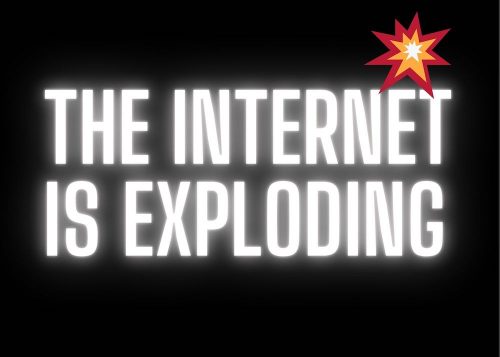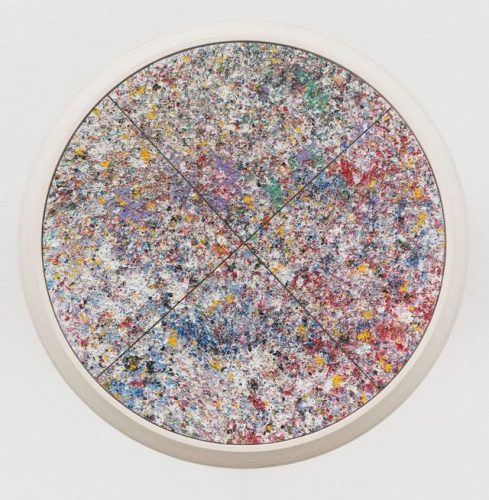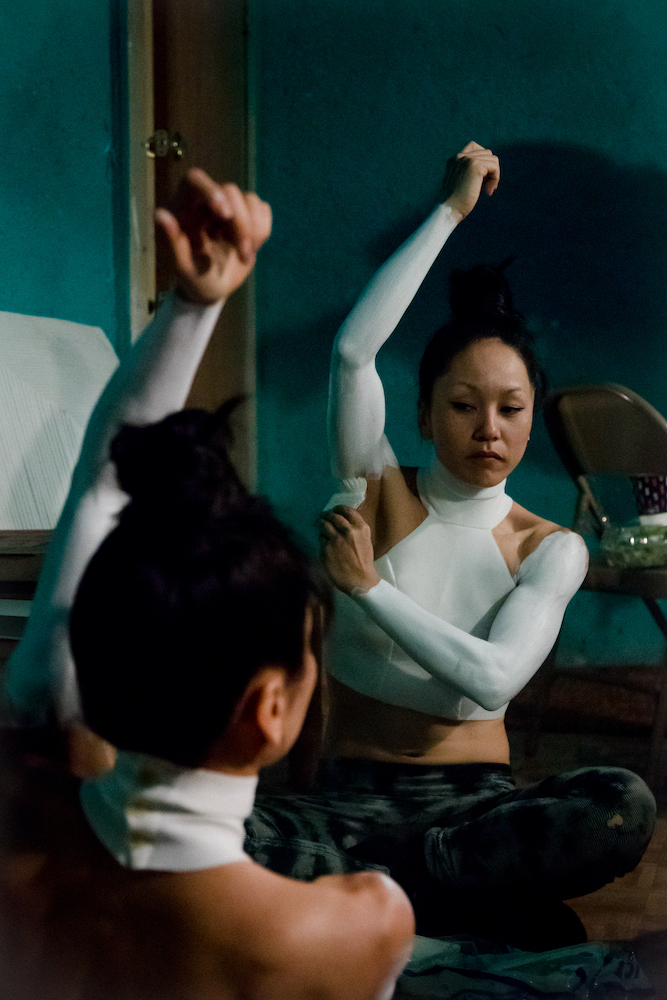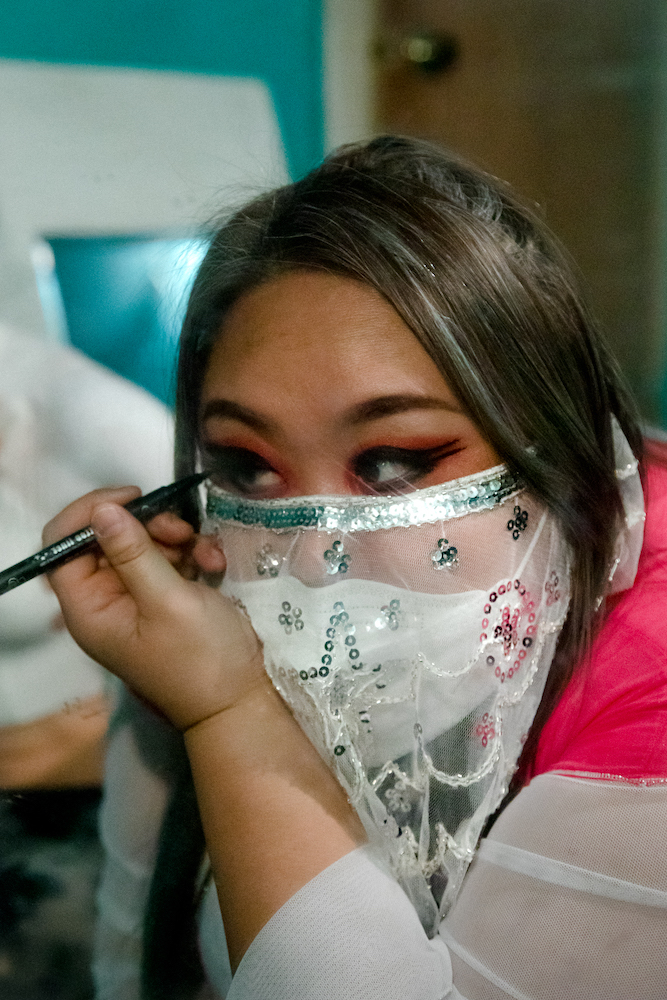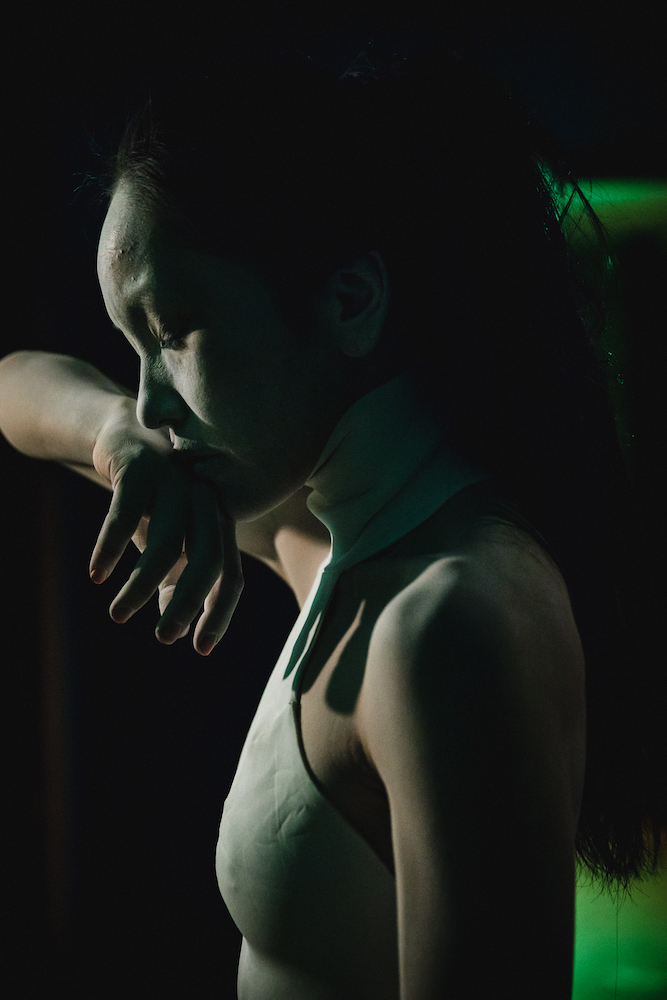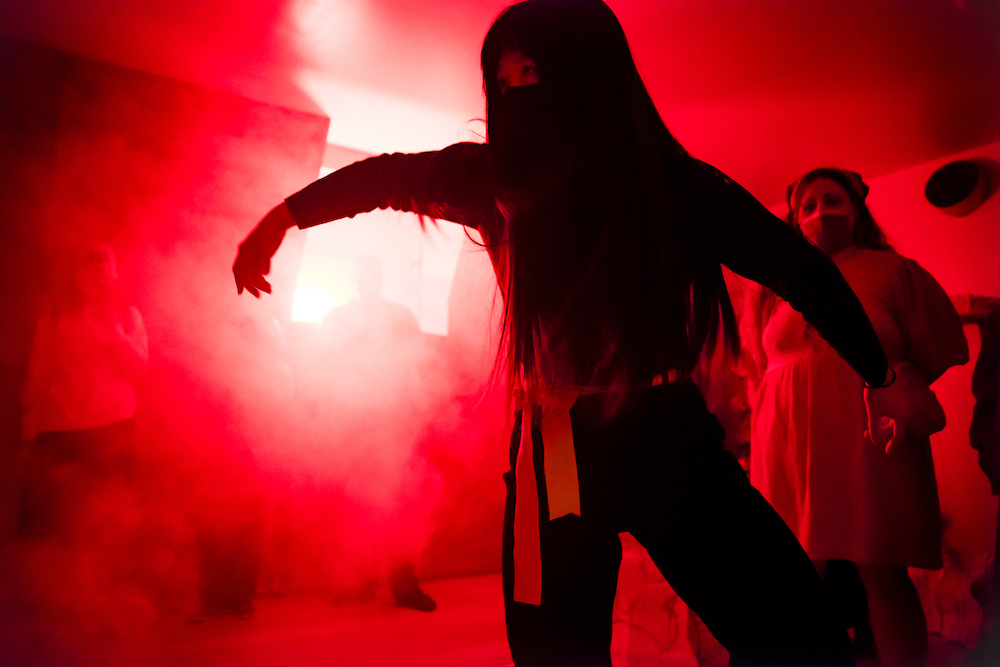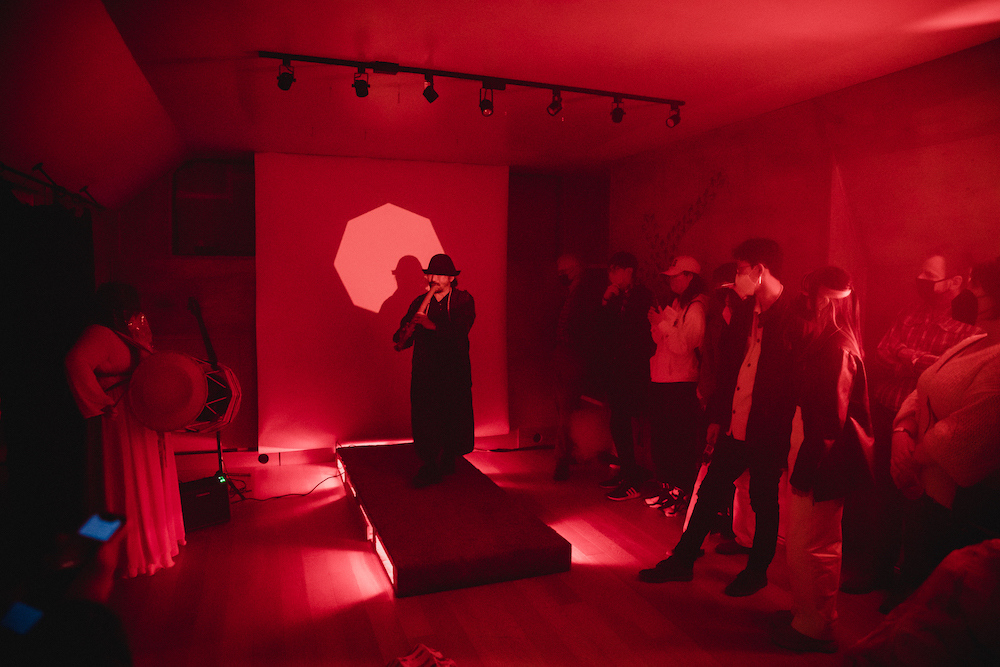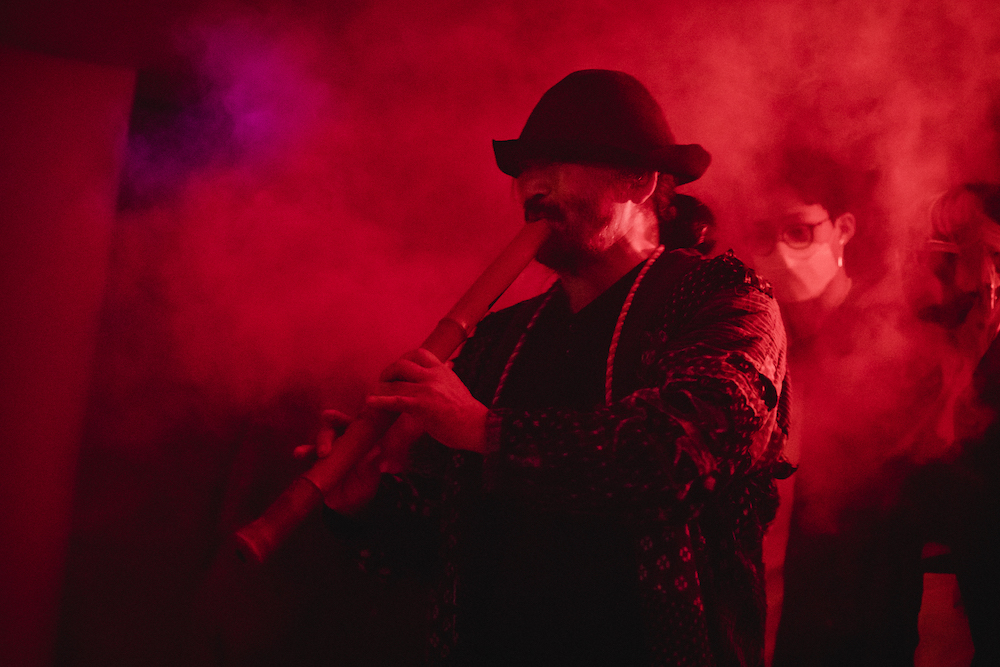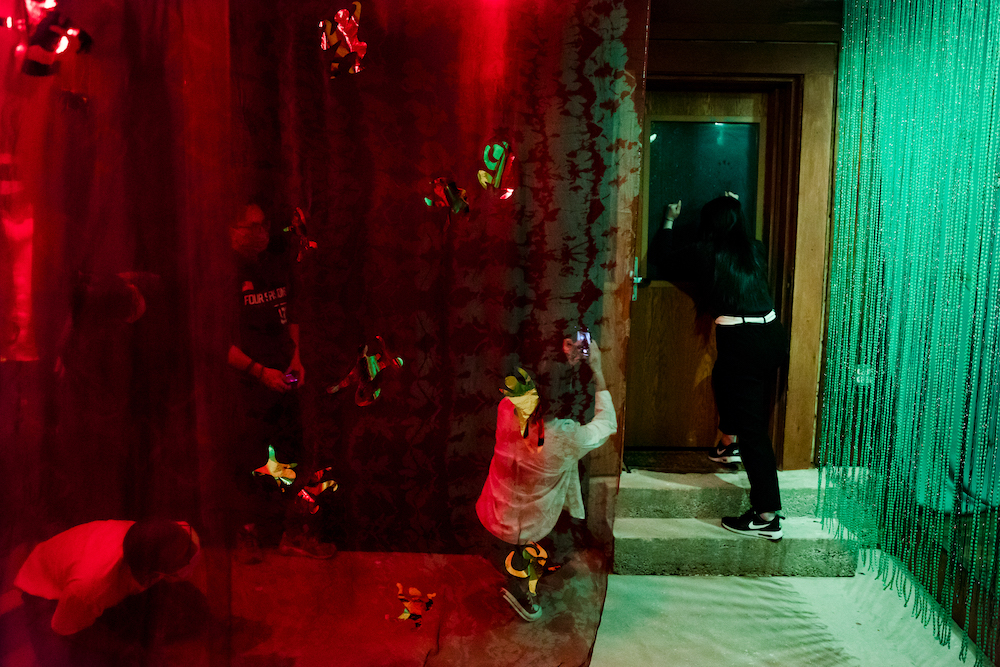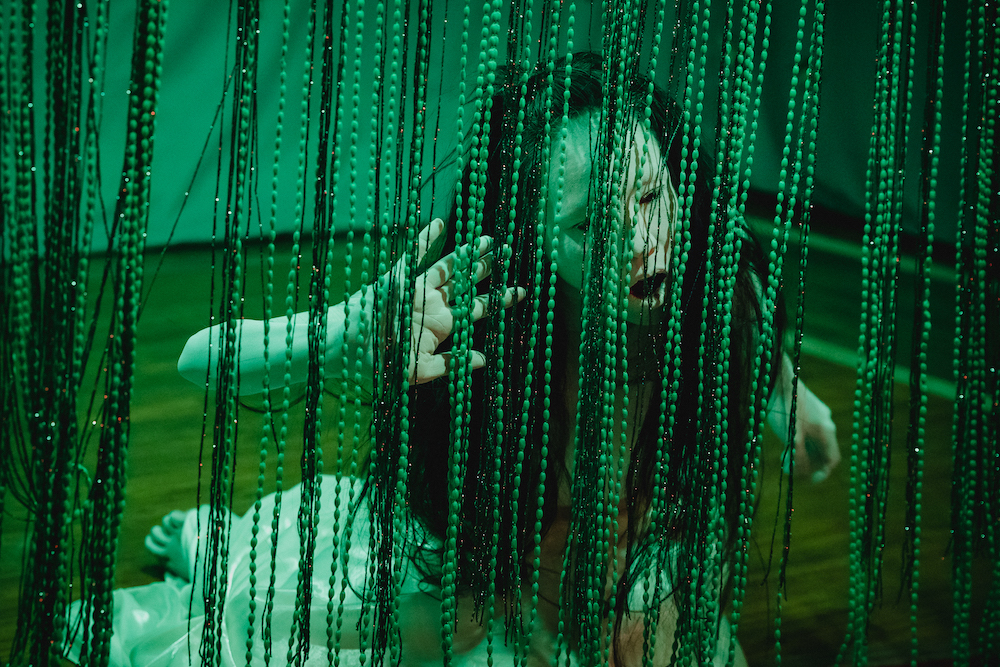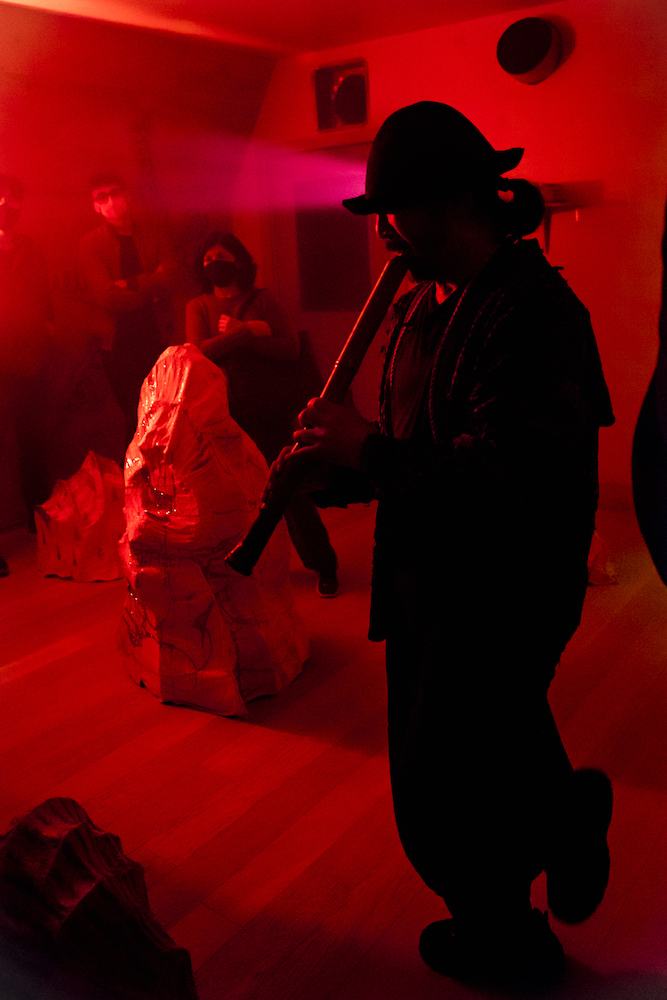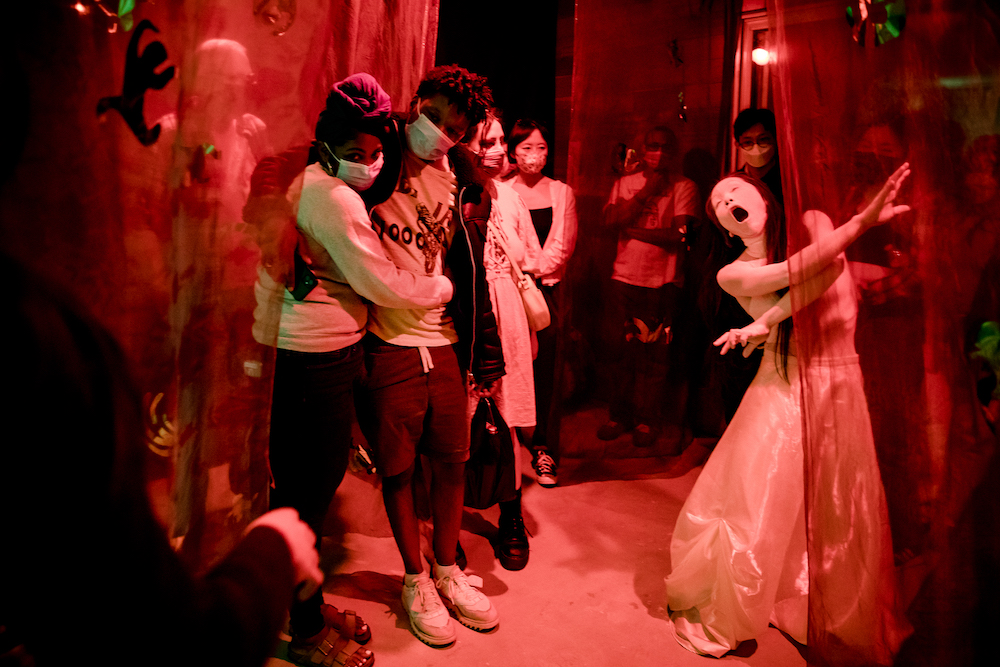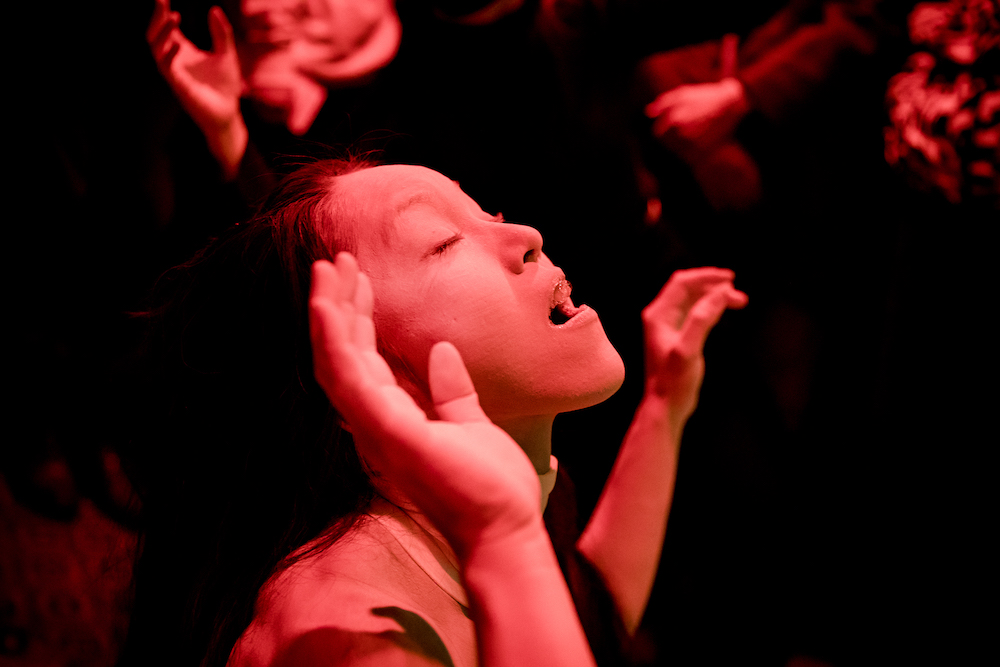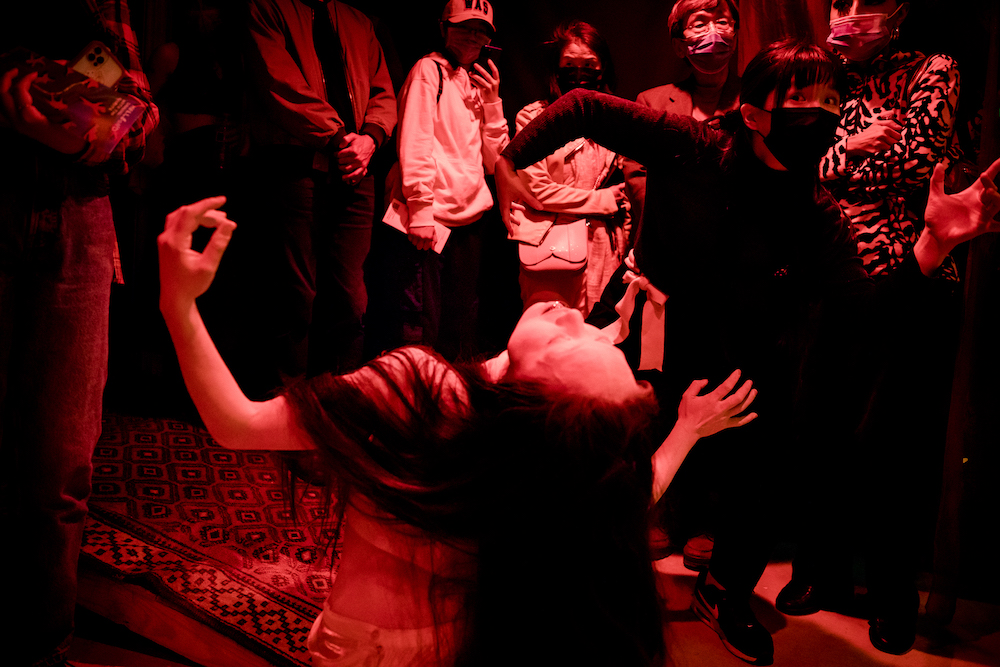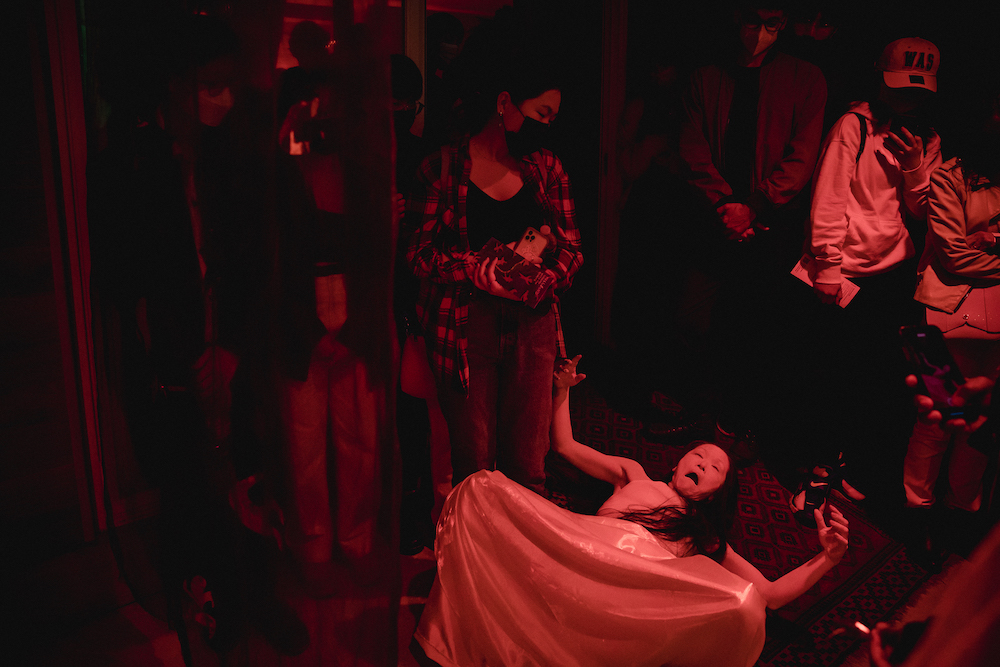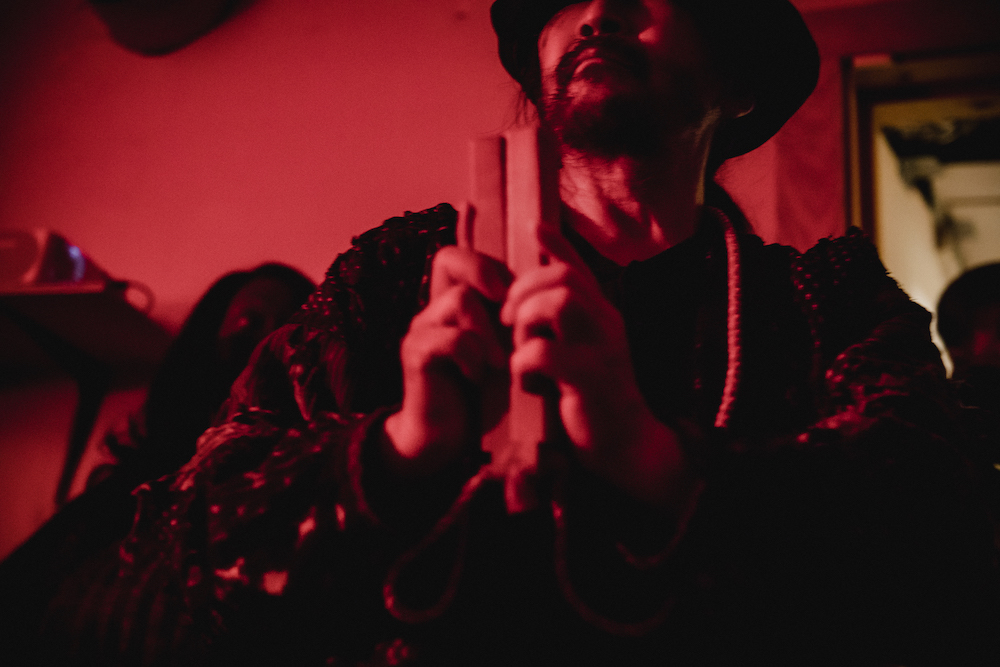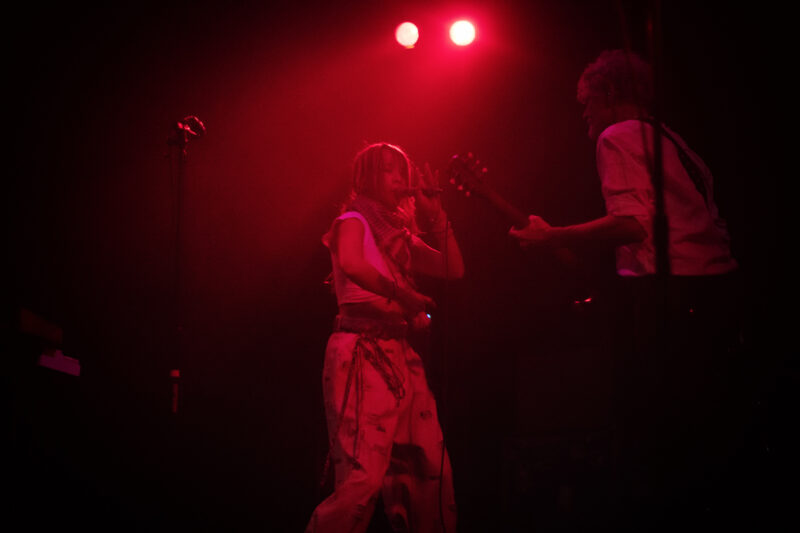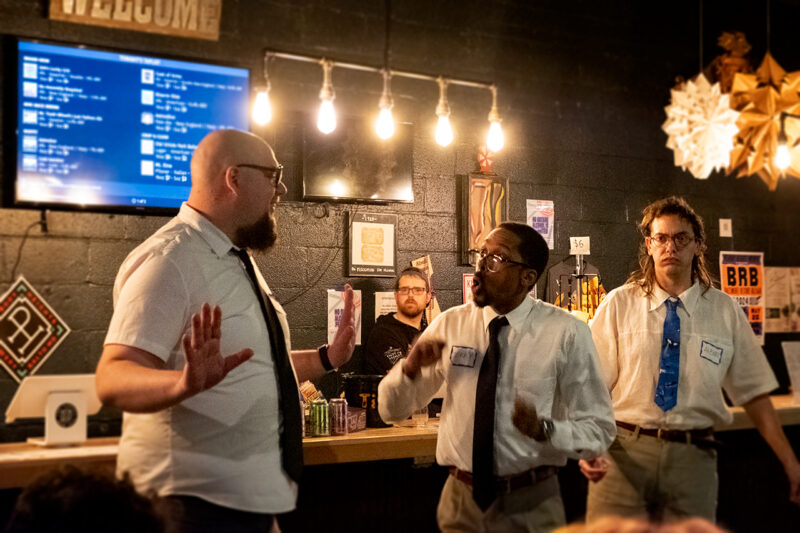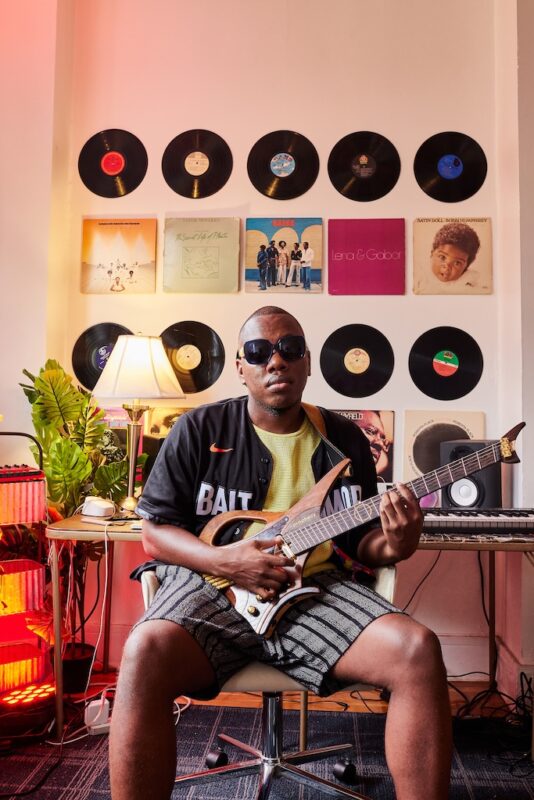Asia North 2022 is a two-month festival that celebrates the Asian communities of Baltimore through performing and visual arts. Many artists, curators, organizers, and businesses work in partnership to put on exhibitions, community gatherings, concerts, and theatrical performances local to the Charles North neighborhood, also known as Koreatown. This multicultural affair is organized by Joanna Pecore and Nerissa Paglinauan of the Asian Arts & Culture Center at Towson University, Center Baltimore Partnership, and the Station North Arts District. Exhibitions and events are being held at Stillpointe Theatre and Motor House until May 28, 2022. The closing party will take place on May 27th, 2022 at various locations in Station North.
HellBond: Dancing with the Spirits was one of the spectacular events produced for this festival. Curators Michael Young, who goes by Miki, and Jia Le Ling transformed the basement of the James E. Hooper House into the chambers of Hell. Here they hosted experimental live performances across two weekends that invited audiences to experience the concept of Hell as it is depicted in Chinese folk religion. Instead of being a place of fear and an everlasting punitive prison, in this version, Hell is described as a place for metamorphosis. As described in the introduction to Hellbond: Dancing with the Spirits, it’s a “rite of passage for all souls, good or bad, to pass through in order to reincarnate into a new life.”
On April 30, four artists improvised a live performance of movement and sound inside the installation. Azumi Oe, a Butoh artist painted in all white, and Hsiao-Chu Hsia, a performance artist dressed in all black, used their bodies to fill the space with intense visceral movements to the sounds of Korean drumming and looped bassy cello played by Dami Soh Schlobohm, and shakuhachi (a bamboo flute) performed by Hideo Sekino.
In the following interview, curators and performers from Hellbond: Dancing with the Spirits discuss Chinese folklore, Korean drumming, psychological aspects of performance art, and more.
